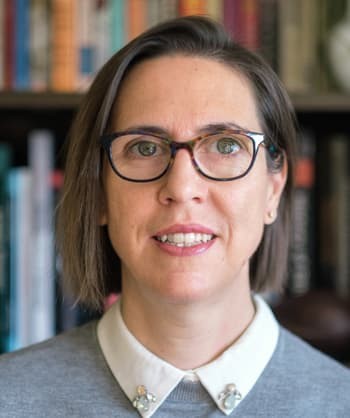
What is the context for this course?
This was for an upper level undergraduate art history seminar course with eight students enrolled. This level course is intended for advanced students in the major, but there are no prerequisites. The goal for the class is for the students to practice art historical writing. My hope is, by the end of the semester, they have seen and analyzed different kinds of art historical writing, considered how to incorporate visual as well as written primary sources into their papers, and learned how to form a solid argument and back it up with visual as well as other types of evidence. Normally this would be a more traditional research paper, but as explained below, we had a unique opportunity in spring 2022. During the semester in question, I had a mixed group of students—both senior majors and first year students who had never taken art history before. I had to address their different levels of expertise, but still give them an opportunity to practice art historical writing.
Why did you choose to use a creative assignment?
I chose a creative assignment because I have been focusing on assignments with real world impact in the last few years to give my students the opportunity to connect their learning to the world around them. I was asked to contribute to an exhibition catalog for a show at the new art gallery at the College of the Holy Cross and thought this was the perfect opportunity to have students contribute to something outside of BC. My colleague at Holy Cross, Prof. Amanda Luyster, was keen to involve the students too, so she worked on the show with her own undergraduate students. I thought a short (500 word) essay for the exhibition catalog would give my students the perfect opportunity to do some research, formulate an argument, and write a mini research paper. More information about the exhibit, Bringing the Holy Land Home: The Crusades, Chertsey Abbey, and the Reconstruction of a Medieval Masterpiece, is available on Holy Cross’s website.
How did you introduce and scaffold the assignment for your students?
I introduced it in person in the classroom by discussing what was expected of us and how we would break it down into tasks and go through it.
I first got them to use Perusall for course readings so they would get in the habit of responding to each other. I assigned readings about the context and the artwork in question. We then discussed in class what the components of the 500 word essay should be and made an outline of topics to be addressed. I then tasked different students in class with different portions of the essay, to formulate 2-3 sentences each based on course readings and research. They first had to present their findings in class and then write their 2-3 sentences based on what the group decided was important to include. Then we combined the sentences into a Google doc and edited it in class, in real time. This took about 2 weeks after they had done the readings and conducted some research.
How did you assess student work?
I graded based on effort and thoroughness—quality of sources found for the research and the amount of thought that went into writing the 2-3 sentences required of them. I also paid attention to how they participated in the in-class editing sessions.
How did the students do?
As a group, they did a fantastic job. Some worked harder than others, but they all took ownership of the project and helped each other out. Prof. Luyster and her colleagues were pleased with the essay, and published it in the catalog and included the whole thing on the gallery wall. It was inspiring to see.
What lessons did you learn?
This was probably a one-time opportunity for me, but my sense that students relish opportunities to engage in learning and research with repercussions beyond the classroom was proven right. I saw that it is possible to get a large group to collaborate on a single piece of writing, and that if you break a difficult assignment into components it becomes more achievable.
Is there anything else you would like to share?
I had a long session with Kim Humphrey from the CTE who patiently had me think through the task at hand and how best to accomplish it. She made me think about my goals for the students, the necessary steps along the way, and how to break things down. I am really grateful.